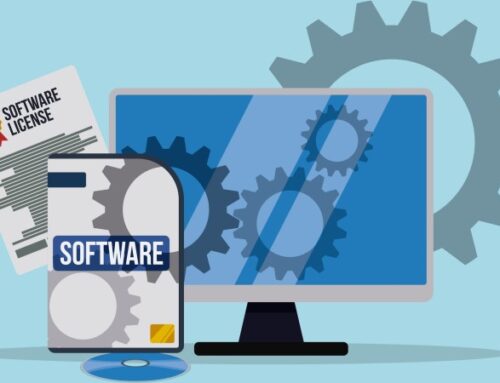Not only students and trainees use e-learning. Today, even primary school children have smartphones, which means that electronic learning begins with our little ones. In the meantime, e-learning offerings have progressed so far that learners feel almost like they are in the classroom. We will explain what e-learning means and give you an overview of the advantages and disadvantages.
That’s what e-learning means
E-Learning is the abbreviation for “Electronic Learning“. It means electronic or self-determined learning. E-learning includes all types of learning that use electronic and digital media for all forms of learning materials. In addition, they often include platforms on which teachers and learners can communicate with each other online. This is often done through chats or message boards. For example, if a course is broadcast live, it is called a webinar.
Whether e-books, blogs, YouTube videos, virtual classrooms, digital operating manuals or online courses – today the term e-learning covers a very wide range. It is also independent of whether the user actively uses the media or just watches it.
From documents, pictures, videos and slide shows to 3D glasses in interactive and virtual environments – all conceivable formats are possible, even in terms of learning materials.
E-learning courses individually and for everyone
Often we are not even aware that we have all already used digital learning platforms. Electronic learning can begin with simple Wikipedia articles or online instructions to access information for our everyday life.
In addition, there are a variety of affordable and partly free e-learning courses for every subject and age group, which can be used both online and offline.
Thus, students have a wide range of e-learning systems available in schools and universities. In the meantime, many processes are merging and becoming increasingly automated. For example, it is possible to insert tests between learning chapters and to adapt the following content based on the results for each student. With the help of progress analyses, learning processes can also be better monitored and optimized.
In addition, a good tool should make it possible to access it from anywhere, thus bridging the geographical distance between teacher and student. People with physical disabilities or groups of people who can only use the respective learning platform at certain times of the day should also be allowed to use the respective Internet platform at any time.
Advantages of e-learning
E-learning replaces or complements traditional further education, such as a classroom lesson or a lecture at a university.
A very big advantage is the flexibility in terms of location and time. This makes it possible to decide for oneself when the user wants to access the information. As long as no student presence is required, students can theoretically use course content from any location and at any time.
Digital learning also solves teachers’ logistical problems. Teachers no longer have to decide which room is currently available and at what time the students can be present.
The fun factor should also not be underestimated. With the help of games and multimedia interactions, many a course can be very entertaining and increase the attention of the course participants.
Different types of learning are addressed
In addition, learning on the Internet appeals to very different types of learners. Some people, for example, are better at auditory learning and prefer audio books, while others learn visually and prefer graphical presentations.
The cost factor is also a decisive advantage. From possible travel costs to stacks of books that can quickly become obsolete, e-learning platforms usually cost less than traditional learning environments.
The mixed forms are also advantageous. Many courses are designed in such a way that the participants have to watch web presentations, for example, or are partly present in video conferences, take online tests and additionally have to be at school for a few days. This simultaneously promotes learning opportunities and flexibility. This form of learning, in which web-based learning is mixed with face-to-face meetings, is also called “blended learning“.
Disadvantages of e-learning
As many advantages as e-learning has, the disadvantages should not be ignored. Because there is a risk that practice is being neglected. With digital training, trainees can learn how to build a car, for example. But students will definitely make progress if they also work on the vehicles themselves.
Long-term teaching from a distance on a PC can also lead to isolation. Many students often sit alone in front of the screen. For this reason, regular contact with teachers and classmates is advisable, ideally in the form of personal meetings.
Sitting in front of the screen for long periods of time is particularly hard on the back and eyes. To prevent postural and eye damage, sufficient breaks should be taken and attention should be paid to an ergonomic, correct sitting posture.
As long as the students follow these tips, there is nothing to prevent successful online learning.
Efficient and secure cloud service for e-learning
With the latest cloud solutions, e-learning formats can be made even more efficient. For example, TeamDrive’s secure cloud service makes it perfectly possible to distribute digital documents to employees and course participants. They can then study the learning material on a tablet or PC both online and offline.
In addition, the associated read confirmation function can be used by management as proof that the employee or course participant has received and read the training material.
This makes it possible to distribute prescribed training and safety instructions and document them directly. For example, GDPR instruction certificates can be automatically logged and stored.




